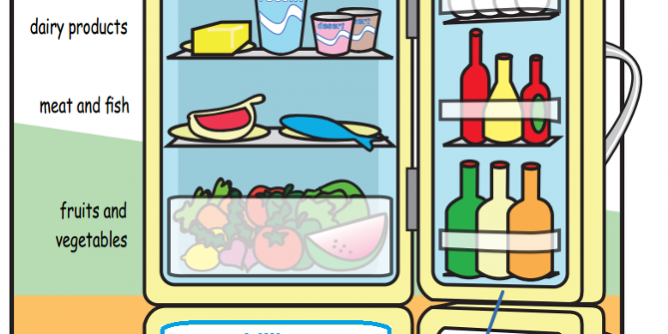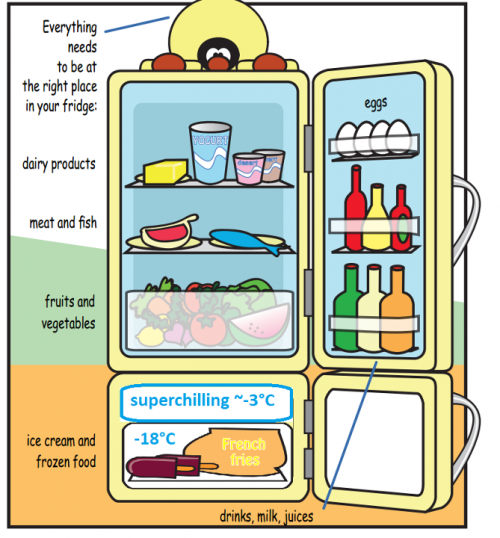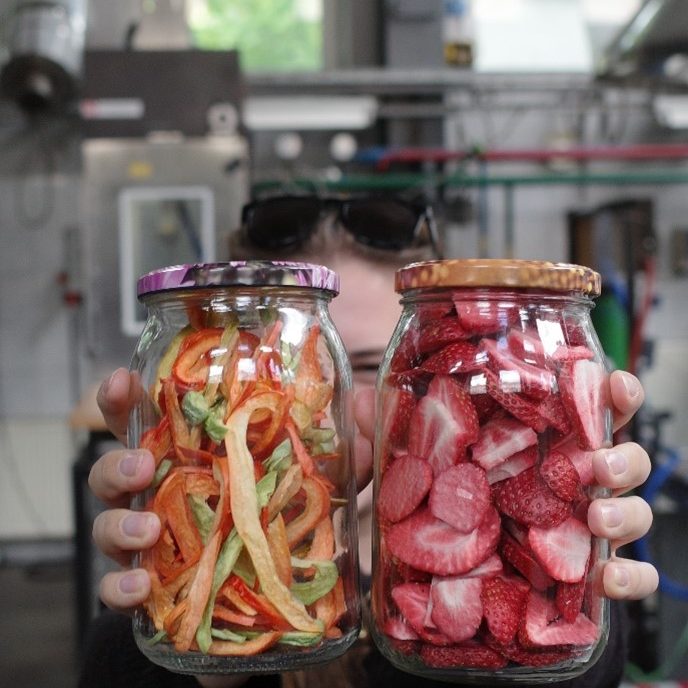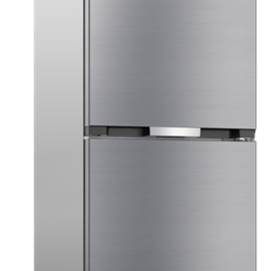Figure above: sketch of what we will be developing as prototype of household refrigerator equipped with superchilled compartment
Superchilling household demonstrator
Location:
Turkey/France
Food Category:
Meat, Fish, Fruits & Vegetables, Dairy
Application:
Household appliance
Main Chain Link:
Domestic
Impact:
Energy savings for domestic refrigerators reducing energy use in conservation compared to frozen food. Providing sufficient, safe, nutritious, healthy and affordable meat and fish. Improving the overall sustainability of food systems by reducing waste. Improving the resilience of food systems to shocks and stresses: extension of shelf life.
GHG emission reductions (several million tonnes of CO2 equivalent), by reducing meat & fish wasted at home
| About 60% of the food, we eat requires refrigeration. According to the latest FAO figures, food loss/waste is estimated to account for 12% of food, while perishable products such as meat or fish may account for 30%. An improved cold chain with a longer shelf life can significantly reduce losses and avoid the CO2 emissions associated with wasteful production. Superchilling is an innovative technology with great potential to provide longer shelf life and better food quality and safety than refrigerated food without the adverse effects of freezing. The main difference from the cooling process is that the product temperature is kept below its freezing point. The amount of ice must be precisely controlled to a maximum of 35% of the water that can be frozen.
Superchilling technology may double the shelf-life compared with storage at traditional refrigeration temperatures. During the Frisbee and other projects, we have worked to develop superchilling technologies for the storage of salmon and pork. Work has shown that processing yield can be higher when product is superchilled and that compared to frozen products, the energy used to perform superchilling is lower. However, superchilling has higher energy consumption compared to chilling but this can be balanced against the benefits of reduce food-loss through longer shelf-life. The objective of demonstrator superchilling is to show how a well-designed household compartment in a fridge enabling food to be stored at well controlled temperatures of -2°C +/- 0.2 enable the storage life of meat to be dramatically extended. The study on safety and quality of the product will be performed in a “sister” the French project SUPERSHIELD. |
MAIN CONTACT:
Garciela Alvarez : graciela.alvarez@inrae.fr










